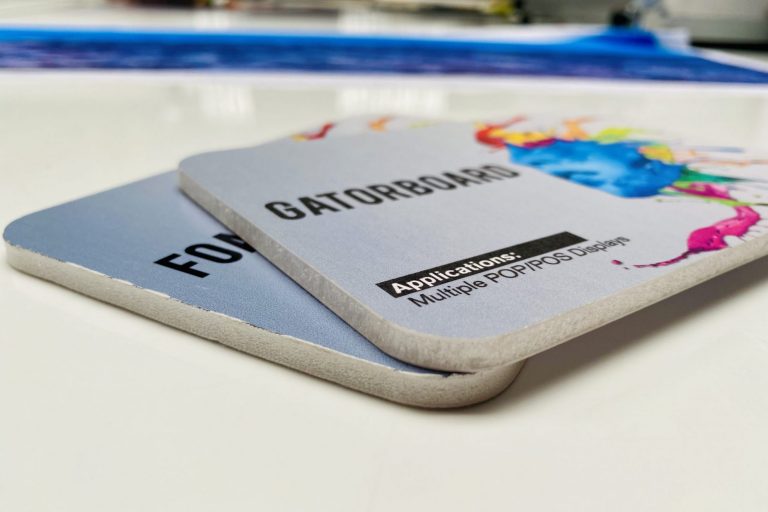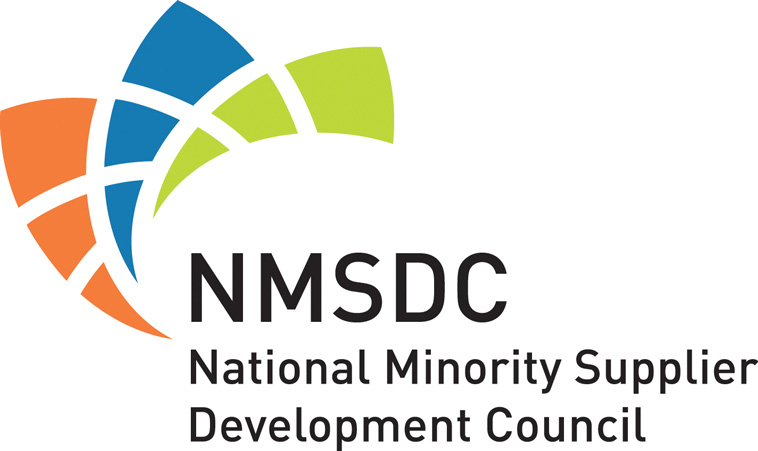
Gatorboard and foamboard are two great options to print your signs. Both materials are lightweight, convenient, and versatile. However, they also differ in some important ways. That’s why today we take a closer look at the difference between gatorboard and foamboard printing.
We know that with so many materials available to create your signs, making the right choice can be difficult. If you are having a hard time making sense of your alternatives, don’t worry—CR&A Custom is here to help.
What Is Foamboard?
Let’s begin our comparison by talking about foamboard.
You may already be familiar with foamboard because it’s commonly used in school projects or to mount photos. However, this is also a convenient option to print your signs.
Foamboard, also called foam core, consists of a layer of foam sandwiched between two layers of paper. This configuration is light both in terms of weight and budget. If cost is your main concern, then foamboard is probably the option that works for you.
Foam core signs are usually printed digitally using UV technology, resulting in high-quality graphics with a matte finish.
This material is flexible, but just up to a point. If you bend it too far, you can create it or warp it, so it’s better to avoid flexing your foam core sign too much. Also, since both sides are made of paper, it’s advisable to avoid contact with water or moisture.
While foam board signs are durable, if you are looking for long-term graphics, then gatorboard signs may be a better choice. For an even more permanent alternative that you can use indoors or outdoors, check out our vinyl signs.
Some of the most common applications of foamboard signs include:
- Window displays
- Directional signage
- Trade show signage
- POP or POS signs
- Poster boards
- Presentation boards
What Is Gatorboard?
The structure of the gatorboard, also known as Gatorfoam or just gator, is very similar to that of foamboard. In both cases, synthetic foam filling is placed between two outer rigid layers.
The big difference is that in the case of gatorboard, the foam core isn’t sandwiched between layers of paper, but between layers of a wood-like material.
This factor is key because it makes gatorboard more robust than foamboard. As a result, gatorboard is more warp-resistant than foam core but it also tends to cost more. Keep in mind that this doesn’t mean that gatorboard is expensive. In fact, both options are remarkably cost-effective.
If you need to print graphics that you plan to use or transport frequently, then gatorboard might be the right choice.
As with foamboard, gatorboard signs are also printed digitally using UV technology, ensuring that your design is rendered in vibrant colors and rich detail.
Another similarity with foam core is that you should avoid exposing your gatorboard signs to excessive moisture. If you need to clean your gatorboard or foamcore signs, steer clear of liquids and use a dry cloth instead.
Gatorboard is a versatile substrate that can be used in a variety of applications. Some of the most common uses of graphics printed on gatorboard include:
- Trade show displays/signage
- POP or POS signs
- Directional signage
- Event signage
- Poster boards
- Presentation boards
The Difference Between Gatorboard and Foamboard Printing
In short, the most important difference between gatorboard and foamboard is that gatorboard is the most resistant option. The secret lies in the materials. While the exterior of the foam core is paper, the gatorboard is covered by a wood-like composite.
With its sturdier surface, Gatorboard is more durable than foamboard, which can be easily scratched or dented if you don’t handle it with care.
Cost is another important differentiator. Foamboard tends to be less expensive than gatorboard but is also less robust for the reasons explained above.
As for the similarities, both substrates have similar structures and are available in custom sizes. In both cases, UV printing is the printing technology most commonly used to create graphics on these materials.
Furthermore, remember that both foamboard and gatorboard are better suited for indoor use and can’t withstand a lot of moisture. However, in some cases, a laminate coat can help make your sign more resistant.
Gatorboard vs. Foamboard: Which One to Choose?
Choosing between gatorboard and foamboard signs is easy if you make the right questions. This brief questionnaire will help you determine which is the material that meets your needs.
- Is cost the main deciding factor? None of these two options is particularly expensive, but if you are on a tight budget, then foamboard is the way to go.
- Is sturdiness your main concern? If you are looking for a more robust and stable solution, then gatorboard should be your choice.
- Do you plan to transport or handle your signs frequently? If you want to create graphics that will be used and moved frequently (for example to attend conferences or trade shows), gatorboard is the ideal alternative.
Finally, it’s worth keeping in mind that regardless of the substrate you choose, both gatorboard and foamboard signs add a touch of branding flair that leaves a lasting impression on your customers and elevates your facilities, your trade show booth, or your POP and POP displays.
About CR&A Custom
CR&A Custom is a Los Angeles-based large format printing company dedicated to creating effective visual solutions for companies of all sizes and across all industries.
When you choose CR&A Custom, you get all the benefits that come with working with a leader in the large format printing industry: fast turnaround times, comprehensive expertise, certifications, and a proven track record of success.
If you are looking for foam core signs, gatorboard signs, or any other type of signage, our experts can help. Contact us today by email (info@cracucstom.com), telephone (213-749-4440), Facebook, Instagram, or LinkedIn) for a free quote or to learn more about our services and products: vinyl banners, custom flags, wall graphics, building wraps, and more!
By CR&A Custom Inc March 16, 2021


